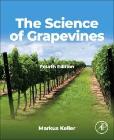
Fully revised and updated The Science of Grapevines, Fourth Edition is an introduction to the physical structure of the grapevine, its organs, their functions, and their interactions with the environment. Scientifically grounded and integrating discoveries in other plant species, it explores the physiological processes underlying grapevine form and function, their developmental and environmental control, and their implications for practical vineyard management. The book begins with a brief overview of the botanical classification, plant morphology and anatomy, and growth cycles of grapevines. It then covers the basic concepts in growth and development, water relations, photosynthesis and respiration, mineral uptake and utilization, and carbon partitioning. Then these concepts are put to use to understand plant-environment interactions including canopy dynamics, yield formation, and fruit composition. The book concludes with an introduction to stress physiology, including water and nutrient stresses, extreme temperatures, and the interaction with other organisms. Progress in the fields of grape cultivar evolution, grape ripening, and stress physiology has been rapid since edition 3 was published in 2020. Edition four reflects the latest insights into these and other key aspects of grapevine anatomy and physiology. Based on the author’s more than 30 years of teaching, research, and practical experience with grapevines and grape production, this book provides an important guide to understanding this fascinating and economically important plant. As a textbook for students and a reference for scientists and industry professionals, the book enables readers to use the discussed scientific concepts in their own research or practical production systems.
- ISBN: 9780443330063
- Editorial: Academic Press
- Encuadernacion: Rústica
- Páginas: 554
- Fecha Publicación: 21/01/2024
- Nº Volúmenes: 1
- Idioma: Inglés
